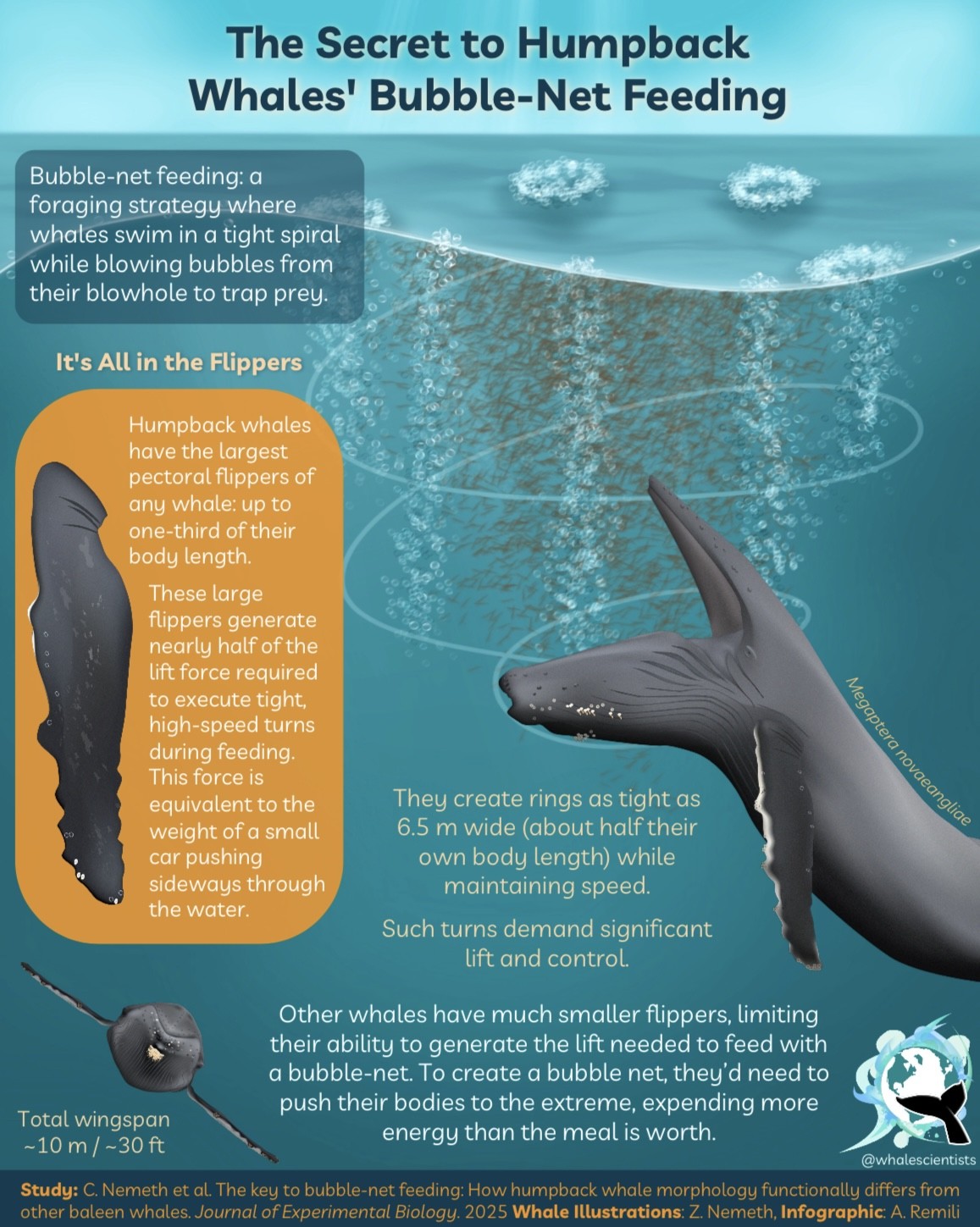For decades, humpback whales across the world have been seen performing a weird and unique trick. While underwater, the large animals start to spiral while blowing strings of bubbles, forming rings that float towards the surface. This is not an idle pastime, however, it’s a cunning strategy the whales have developed to catch their prey, which become confused and trapped within these “bubble nets”.
It’s an effective way to feed, but it has not been observed in any other whale species, not even among the other species of baleen whales. In order to find out how these large animals perform this incredible strategy, researchers led by Cameron Nemeth, a recent graduate from the University of Hawaiʻi at Mānoa, examined the whale’s morphology and the biomechanics involved in spiraling underwater.
Whales and other cetaceans have evolved various specialized tactics for feeding or navigating their aquatic worlds, but bubble-net feeding may be one of the more creative examples. It has been documented in humpback whales across the world, from the Australian coast and the Antarctic Peninsula to the waters of British Columbia and the Gulf of Maine.
“Bubble-net feeding is a unique foraging strategy to humpback whales where they swim in a spiral pattern around a group of prey while exhaling air from their blowhole,” Nemeth told IFLScience.
“These bubbles slowly rise towards the surface and create a net-like structure, trapping prey inside the net. Because baleen whales feed on large schools of fish and krill, this allows humpbacks to aggregate more prey into a tight cluster so more prey can be consumed in a single engulfment.”
In this latest study, Nameth, who just earned his Bachelor of Science degree in marine biology, worked with colleagues on a wider project at the University of Hawaiʻi at Mānoa’s Institute of Marine Biology (HIMB) Marine Mammal Research Program (MMRP). To gather their data, the team relied on drone footage and the use of non-invasive suction-cup tags to track how the whales moved in the water. This allowed them to accurately quantify the turning performance required for these complex maneuvers.
The secret, Nameth and colleagues found, lies in the whales’ massive pectoral flippers. This, they explained in a statement, was not completely surprising. Previous studies into humpback whale morphology has shown that their flippers enhance their maneuverability, but Nameth was surprised to discover that these were the only whales to achieve the turning performance needed to make bubble-nets work.
I think this suggests humpback whales are a bit like underwater fighter pilots, performing maneuvers that one may expect to see in a Top Gun movie.
Cameron Nameth
When thinking about this ability, Nameth likens the whale’s movement to that of large airplanes.
“While planes rely on enormous wings to keep their massive weight from plummeting and to maneuver their rigid frames through the air, most whales have relatively small pectoral flippers,” he told IFLScience. “Neutral buoyancy in water frees whales from the need to generate lift like an aircraft. Humpbacks, however, have abnormally large pectoral flippers, which allow them to perform acrobatic-like maneuvers in a variety of behavioral contexts.”

The secrets to a good bubble net, it seems, rests in the flippers.
Image credit: Anaïs Remili and Zoltan Nemeth.
“Even while maintaining speed, these whales are turning tight, adjusting their body’s roll angle, changing directions quickly to set up for the engulfment, and accelerating fast to engulf their prey,” Nemeth said. “I think this suggests humpback whales are a bit like underwater fighter pilots, performing maneuvers that one may expect to see in a Top Gun movie.”
The results of their work showed that the humpback’s pectoral flippers can create nearly half of the force needed to turn, making them extremely efficient when deploying this feeding strategy. For other whale species to achieve this, they would need to expend a lot more energy, which would likely make the effort impractical. So, it is the humpbacks’ special body shape that allows them to successfully hunt smaller or more scattered groups of prey.
“Drones played a critical role in our study,” Nemeth added. “Because we had drones flying overhead of our tagged animals, we were able to estimate the length and mass of each individual, giving us the most accurate estimates of the given forces being generated during bubble-net feeding.”
Nemeth led this project while finishing his final semester as an undergraduate. He will be continuing his research with the institute and transitioning to a PhD program in late 2026, where he will lead the lab’s work on humpback whales. In an effort to make the research available in the Hawaiian language, Nemeth worked with the journal to include a translated abstract for the paper, which he produced himself. This has set a precedent for future publications from the lab.
The paper is published in the Journal of Experimental Biology.
Source Link: Humpback Whale Flippers Let Them Move "Like Underwater Fighter Pilots" To Make Unique Bubble Nets